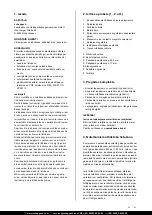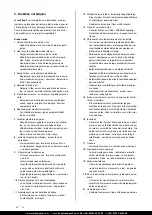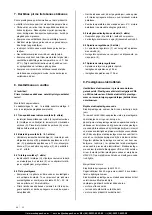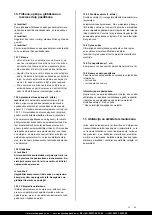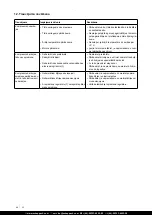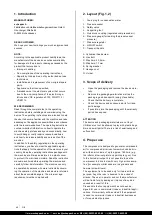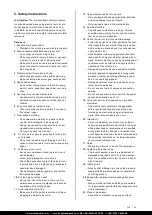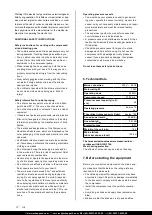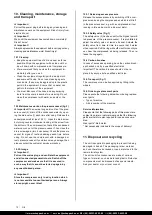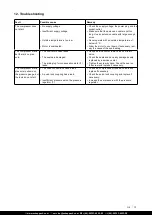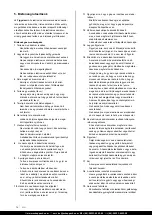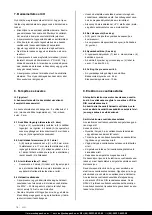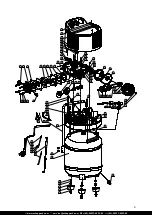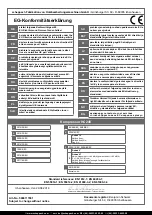
72
GB
www.scheppach.com
service@scheppach.com
+(49)-08223-4002-99
+(49)-08223-4002-58
10. Cleaning, maintenance, storage
and transport
m
Important!
Pull out the power plug before doing any cleaning and
maintenance work on the equipment. Risk of injury from
electric shock!
m
Important!
Wait until the equipment has cooled down completely!
Risk of burns!
m
Important!
Always depressurize the equipment before carrying out any
cleaning and maintenance work! Risk of injury!
10.1 Cleaning
•
Keep the equipment free of dirt and dust as far as
possible. Wipe the equipment with a clean cloth or
blow it down with compressed air at low pressure.
•
We recommend that you clean the equipment im-
mediately after you use it.
•
Clean the equipment regularly with a damp cloth
and some soft soap. Do not use cleaning agents
or solvents; these may be aggressive to the plastic
parts in the equipment. Ensure that no water can
get into the interior of the equipment.
•
You must disconnect the hose and any spraying
tools from the compressor before cleaning. Do not
clean the compressor with water, solvents or the
like.
10.2 Maintenance work on the pressure vessel (fig. 3)
m
Important!
To ensure a long service life of the pres-
sure vessel (2), drain off the condensed water by open-
ing the drain valve (1) each time after using. Release the
vessel pressure first (see 10.3.1). Open the drain screw
by turning counter-clockwise (looking at the screw from
the bottom of the compressor) so that all the condensed
water can run out of the pressure vessel. Then close the
drain screw again (turn it clockwise). Check the pressure
vessel for signs of rust and damage each time before
using. Do not use the compressor with a damaged or
rusty pressure vessel. If you discover any damage, then
please contact the customer service workshop.
10.3 Storage
m
Important!
Pull out the mains plug and ventilate the equipment
and all connected pneumatic tools. Switch off the
compressor and make sure that it is secured in
such a way that it cannot be started up again by
any unauthorized person.
m
Important!
Store the compressor only in a dry location which
is not accessible to unauthorized persons. Always
store upright, never tilted!
10.3.1 Releasing excess pressure
Release the excess pressure by switching off the com-
pressor and using the compressed air which is still left
in the pressure vessel, e.g. with a compressed air tool
running in idle mode or with a blow-out pistol.
10.3.2 Safety valve (Fig. 1)
The safety valve (3) has been set for the highest permit-
ted pressure of the pressure vessel. It is prohibited to
adjust the safety valve or remove its seal. Actuate the
safety valve from time to time to ensure that it works
when required. Pull the ring with suffi cient force until you
can hear the compressed air being released. Then re-
lease the ring again.
10.4 Carbon brushes
In case of excessive sparking, have the carbon brush-
es checked only by a qualified electrician.
Important! The carbon brushes should not be re-
placed by anyone but a qualified electrician.
10.5 Transport (fig. 1)
The compressor can be transported by tilting to the
wheels.
10.6 Ordering replacement parts
Please quote the following data when ordering replace-
ment parts:
• Type of machine
• Article number of the machine
Service information
Please note that the following parts of this product are
subject to normal or natural wear and that the following
parts are therefore also required for use as consuma-
bles.
Wear parts*: Belt, clutch
* Not necessarily included in the scope of delivery!
11. Disposal and recycling
The unit is supplied in packaging to prevent its being
damaged in transit. This packaging is raw material
and can therefore be reused or can be returned to the
raw material system.
The unit and its accessories are made of various
types of material, such as metal and plastic. Defective
components must be disposed of as special waste.
Ask your dealer or your local council.




